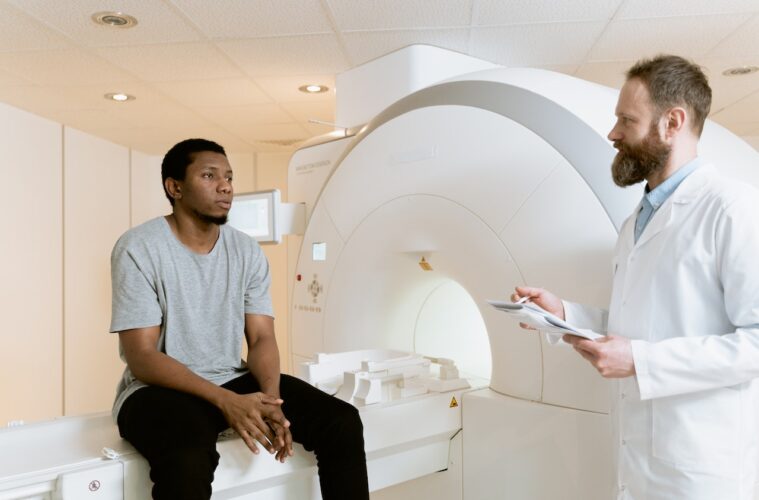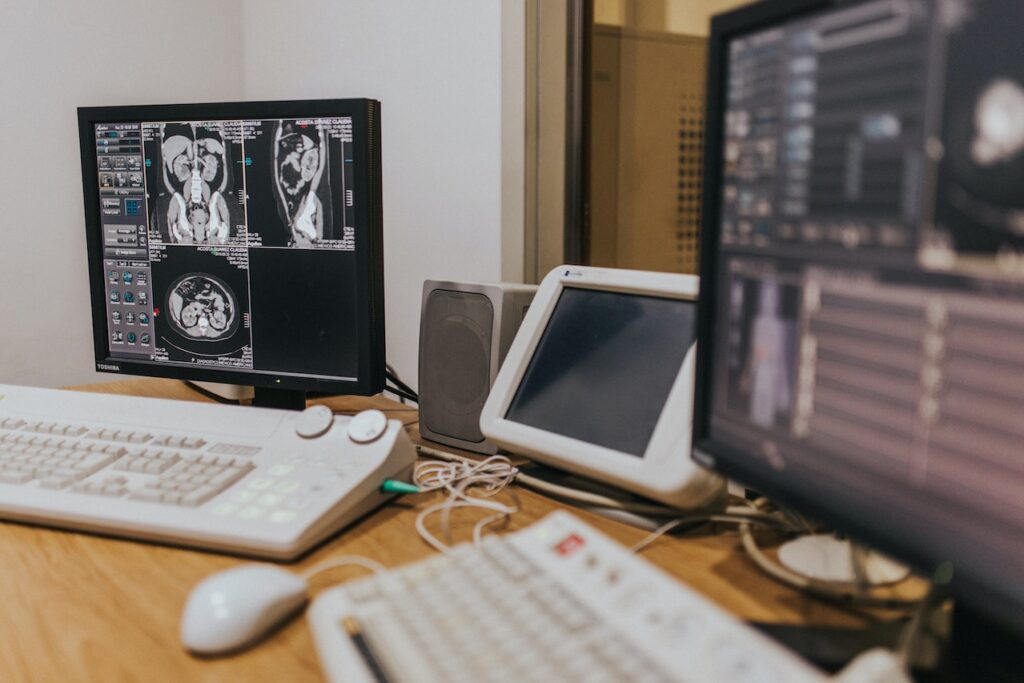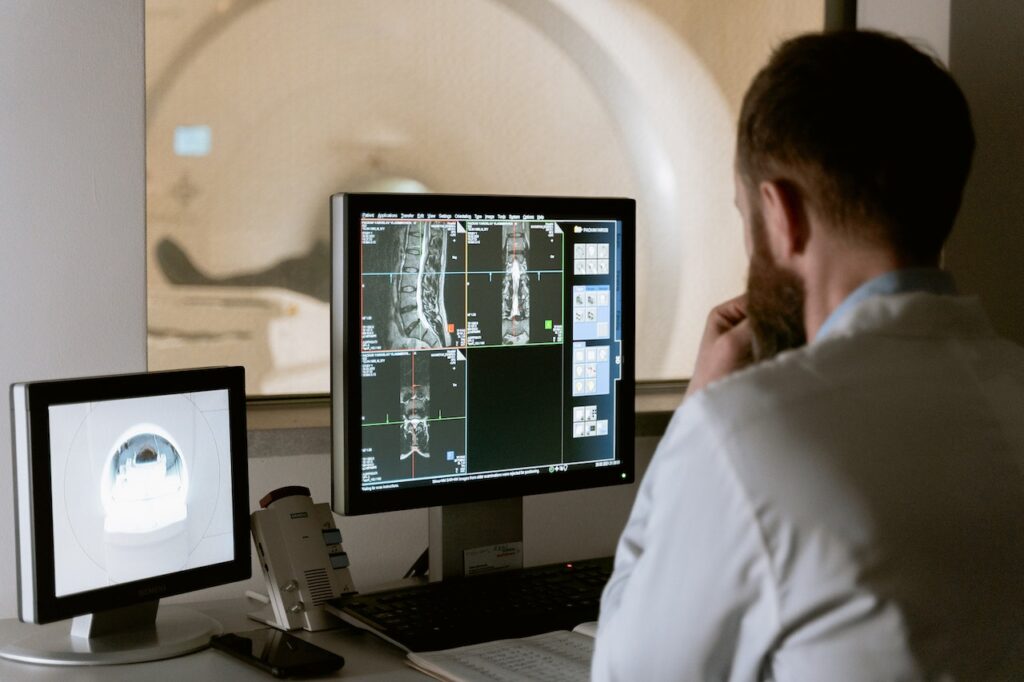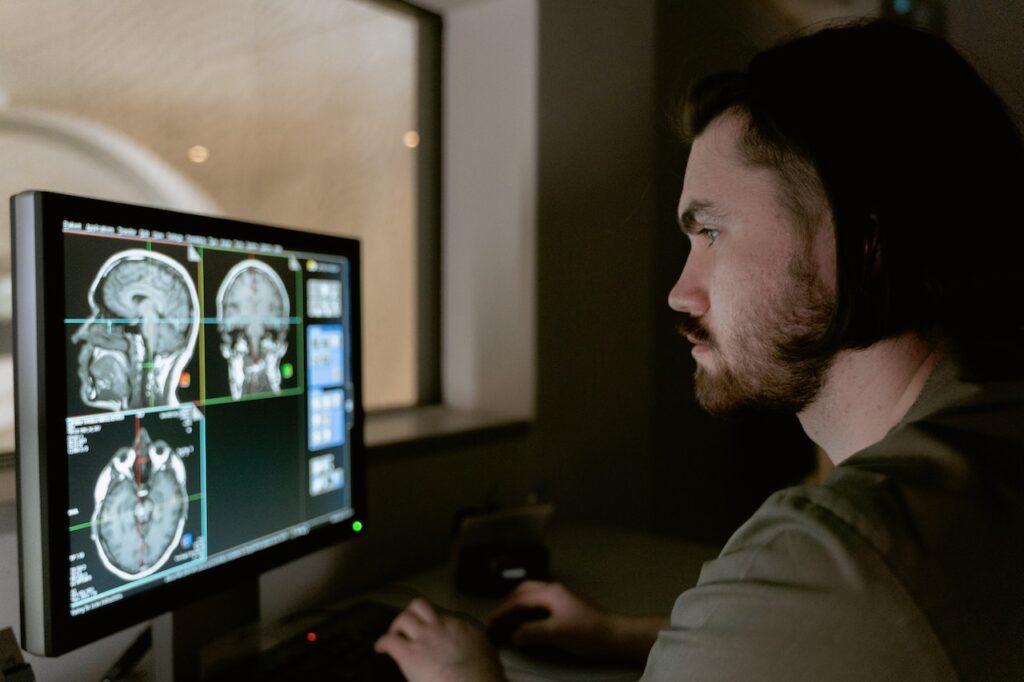Dexa Scan Cost: Understanding the Procedure and Its Importance in Diagnosing Osteoporosis
Dexa scan, also known as dual-energy x-ray absorptiometry, is a medical imaging technique used to measure bone density. It is a quick and painless procedure that involves lying on a table while a scanner passes over the body, emitting low-dose x-rays. Dexa scan is commonly used to diagnose osteoporosis, a condition characterized by weak and brittle bones.
While dexa scan is a crucial diagnostic tool, it can be costly. The cost of dexa scan in the United States ranges from $150 to $250, depending on the location and provider. However, the cost may be covered by insurance or Medicare, especially for individuals at high risk of osteoporosis. It is important to understand the cost and insurance coverage of dexa scan to make informed decisions about one’s health.
Key Takeaways
- Dexa scan is a medical imaging technique used to measure bone density and diagnose osteoporosis.
- The cost of dexa scan in the United States ranges from $150 to $250, but insurance or Medicare may cover the cost.
- Understanding the cost and insurance coverage of dexa scan is important for making informed decisions about one’s health.
Understanding Dexa Scan
Dexa scan, also known as dual-energy x-ray absorptiometry, is a medical imaging procedure that measures bone mineral density. The test uses low-dose x-ray beams to scan the bone and soft tissue in the body. The test is commonly used to diagnose osteoporosis, a condition that causes bone loss and increases the risk of fractures.
During the test, the patient lies on a table while a scanner arm passes over their body. The scanner arm emits two low-dose x-ray beams that are absorbed differently by bone and soft tissue. This allows the machine to calculate the bone mineral density and provide an accurate diagnosis of osteoporosis.
Dexa scan is a safe and painless procedure that takes only a few minutes to complete. The test is non-invasive and does not require any preparation. Patients can eat and drink normally before the test and do not need to undress.
The cost of a dexa scan can vary depending on the location and healthcare provider. However, the average cost of a dexa scan in the United States is around $150-$250. Some insurance plans may cover the cost of the test, so patients should check with their provider before scheduling the procedure.
In conclusion, dexa scan is a useful diagnostic tool for measuring bone mineral density and diagnosing osteoporosis. The test is safe, painless, and non-invasive, making it an ideal choice for patients of all ages. The cost of the test can vary, but patients should check with their insurance provider to see if it is covered.
Procedure of Dexa Scan
Dexa scan is a quick and non-invasive procedure that measures bone mineral density. The procedure typically takes around 10 to 20 minutes to complete, and it involves a low dose of radiation. During the procedure, the patient will lie down on a padded table while a scanner arm passes over the body.
To prepare for the procedure, patients are advised to wear comfortable clothing and avoid wearing any clothing with metal, such as zippers or buttons. Patients may also be asked to remove any jewelry or accessories that could interfere with the scan.
Before the scan begins, patients will be asked to change into a hospital gown to ensure that there are no metal objects on their clothing. Once the patient is ready, a technician will position the scanner arm over the area of the body being scanned.
During the scan, patients will need to remain still and may be asked to hold their breath for a few seconds to ensure that the images are clear. The technician may also reposition the scanner arm to capture images of different areas of the body.
After the scan is complete, the technician will analyze the images and provide a report to the patient’s healthcare provider. The healthcare provider will use the report to assess the patient’s bone health and determine if any further treatment or monitoring is necessary.
Overall, the dexa scan procedure is a safe and effective way to measure bone mineral density. With proper preparation and the help of a skilled technician, patients can feel confident and comfortable during the procedure.
Accuracy and Safety of Dexa Scan
Dexa Scan is a medical test that uses X-rays to measure bone density and diagnose osteoporosis, a condition that weakens bones and makes them more prone to fractures. Dexa Scan is a highly accurate and safe test that can detect bone loss early and monitor the effectiveness of treatments.
Accuracy
Dexa Scan is considered the gold standard for measuring bone density. It is highly accurate and can detect even small changes in bone density. The test results are expressed as a T-score, which compares the patient’s bone density to that of a healthy young adult of the same sex. A T-score of -1 or above is considered normal, while a T-score between -1 and -2.5 indicates low bone density (osteopenia) and a T-score of -2.5 or below indicates osteoporosis.
Radiation
Dexa Scan uses a very low dose of radiation, much lower than a standard chest X-ray. The amount of radiation exposure from a Dexa Scan is similar to the amount of radiation a person receives from natural sources in one day. The risk of developing cancer from a Dexa Scan is very low, and the benefits of early detection and treatment of osteoporosis outweigh the risks.
Safety
Dexa Scan is a safe and non-invasive test that does not require any preparation or recovery time. The test takes about 10 to 20 minutes to complete, and the patient can resume normal activities immediately afterward. Dexa Scan is not recommended for pregnant women, as the radiation may harm the developing fetus.
Research
Numerous studies have shown the accuracy and safety of Dexa Scan in diagnosing osteoporosis and monitoring bone density changes over time. Dexa Scan is also used in research studies to investigate the effects of medications, lifestyle changes, and other interventions on bone health.
Conclusion
Dexa Scan is a highly accurate and safe test for measuring bone density and diagnosing osteoporosis. The test uses a low dose of radiation and does not require any preparation or recovery time. Dexa Scan is an essential tool in the prevention, early detection, and treatment of osteoporosis.
Importance of Dexa Scan in Diagnosing Osteoporosis
Osteoporosis is a condition that affects bone health, leading to bone loss and an increased risk of fractures. Diagnosing osteoporosis early is crucial in preventing further bone loss and reducing the risk of fractures. Dexa scan is a non-invasive diagnostic test that measures bone mineral density and is considered the gold standard for diagnosing osteoporosis.
Dexa scan results are reported in T-scores and Z-scores. T-scores compare the patient’s bone density to that of a healthy young adult of the same sex, while Z-scores compare the patient’s bone density to that of an age-matched population. A T-score of -2.5 or lower indicates osteoporosis, while a T-score between -1 and -2.5 indicates osteopenia, a condition that precedes osteoporosis.
Dexa scan is also useful in assessing fracture risk. Patients with a T-score of -2.5 or lower have a higher risk of fractures, especially in the hip, spine, and wrist. Dexa scan can also be used to monitor response to treatment and detect changes in bone density over time.
In summary, Dexa scan is an essential tool in diagnosing osteoporosis and assessing fracture risk. Early detection and treatment of osteoporosis can prevent further bone loss and reduce the risk of fractures, which can have a significant impact on a patient’s quality of life.
Dexa Scan for Body Composition Analysis
Dexa Scan is a medical imaging technique that uses X-rays to measure bone mineral density and body composition. It is a non-invasive and painless procedure that provides accurate and reliable results. Dexa Scan for Body Composition Analysis is a popular application of this technique that measures the amount of fat, muscle, and bone in the body.
Body composition is an important indicator of overall health and fitness. It is not just about body weight or body mass index (BMI), but also about the distribution of fat and muscle in the body. Dexa Scan can provide a detailed analysis of body composition, including lean muscle mass, body fat percentage, and visceral fat.
Lean muscle mass is the amount of muscle tissue in the body that is not fat. It is an important factor in maintaining a healthy metabolism and preventing obesity. Dexa Scan can accurately measure lean muscle mass and help individuals monitor their muscle growth or loss.
Body fat percentage is the proportion of fat in the body compared to the total body weight. High body fat percentage is associated with increased risk of chronic diseases such as diabetes, heart disease, and stroke. Dexa Scan can provide an accurate measurement of body fat percentage and help individuals track their progress in reducing body fat.
Visceral fat is the fat that surrounds the organs in the abdominal cavity. It is a key risk factor for metabolic diseases such as type 2 diabetes and cardiovascular disease. Dexa Scan can measure the amount of visceral fat in the body and help individuals take steps to reduce it.
In conclusion, Dexa Scan for Body Composition Analysis is a valuable tool for individuals who want to monitor their body composition and improve their overall health and fitness. It provides accurate and reliable results that can help individuals make informed decisions about their diet and exercise habits.
Cost of Dexa Scan in United States
Dexa scan, also known as dual-energy x-ray absorptiometry, is a medical imaging test used to measure bone density. It is a commonly recommended test for individuals with osteoporosis or at risk of developing the condition. The cost of a Dexa scan in the United States varies depending on several factors, including the location, the facility, and the insurance coverage.
According to the Healthcare Bluebook, the national average cost of a Dexa scan without insurance is around $150. However, the cost can range from $100 to $250 depending on the location and facility. For example, the cost of a Dexa scan at a hospital can be higher than at a private imaging center.
For individuals with insurance coverage, the cost of a Dexa scan can be significantly lower. Most insurance plans cover the cost of a Dexa scan for individuals at risk of osteoporosis or those who have already been diagnosed with the condition. However, the coverage and out-of-pocket costs vary depending on the insurance plan.
Some insurance plans require a copay, which can range from $10 to $50, while others cover the entire cost of the test. Individuals are advised to check with their insurance provider to determine their coverage and out-of-pocket costs.
Overall, the cost of a Dexa scan in the United States can be affordable for individuals with insurance coverage. However, for those without insurance, the cost can be a significant financial burden. It is recommended to shop around for the best price and to ask about any available discounts or payment plans.
Insurance and Medicare Coverage for Dexa Scan
Many insurance plans cover the cost of a bone density test, also known as a DEXA scan. However, the extent of coverage may vary depending on the insurance company and the specific policy.
Medicare Part B covers a DEXA scan once every 24 months (or more frequently if medically necessary) for people who meet certain criteria. This includes women whose doctors determine that they are estrogen deficient and at risk for osteoporosis, people with vertebral abnormalities, and those receiving long-term glucocorticoid (steroid) therapy. Medicare also covers the test for people who are being monitored or treated for osteoporosis.
It is important to note that while Medicare covers the cost of the test, there may still be out-of-pocket expenses such as deductibles and coinsurance. Additionally, if the DEXA scan is performed more frequently than Medicare guidelines allow, the patient may be responsible for the full cost of the test.
For those with private insurance, coverage for a DEXA scan may depend on the specific policy. Some plans may require a referral from a primary care physician or specialist, while others may cover the test without a referral. It is important to check with the insurance company to determine the extent of coverage and any out-of-pocket expenses.
In summary, while Medicare Part B covers a DEXA scan once every 24 months for certain individuals, coverage for the test may vary depending on the insurance plan. Patients should check with their insurance company to determine the extent of coverage and any associated costs.
Dexa Scan in Pregnancy
Dexa scans are commonly used to measure bone density and diagnose osteoporosis. However, the use of dexa scans during pregnancy is not recommended unless there is a medical need.
Pregnant women should avoid radiation exposure as much as possible, especially during the first trimester when the fetus is most vulnerable. Dexa scans use a small amount of radiation, which can potentially harm the developing fetus.
If a dexa scan is deemed necessary during pregnancy, the benefits must outweigh the risks. The radiation dose should be kept as low as possible, and the scan should be performed after the first trimester. The mother should also wear a lead apron to protect the fetus from radiation exposure.
Overall, dexa scans are not routinely performed during pregnancy due to the potential risks to the developing fetus. Pregnant women who have concerns about their bone health should discuss their options with their healthcare provider.
In summary, dexa scans should be avoided during pregnancy unless there is a medical need. The potential risks to the developing fetus must be carefully considered, and the scan should be performed after the first trimester with the lowest possible radiation dose. Pregnant women should discuss their concerns with their healthcare provider.
Precautions During Dexa Scan
Dexa scan is a non-invasive medical procedure that measures bone mineral density. It is a safe and painless procedure, but there are certain precautions that patients should take before and during the scan.
Metal
Patients should avoid wearing any metal objects, such as jewelry, watches, or clothing with metal buttons or zippers. Metal can interfere with the accuracy of the scan and produce false results. Patients may be asked to change into a gown or clothing without metal before the scan.
Comfortable Clothing
Patients should wear comfortable clothing that does not have metal. Loose-fitting clothing is recommended, as tight clothing can affect the accuracy of the scan. Patients may also be asked to remove any clothing that may interfere with the scan, such as a bra with underwire.
Other Precautions
Patients should inform their healthcare provider if they have any medical conditions, such as pregnancy or recent surgery, that may affect the scan. Patients should also inform their healthcare provider if they have any metal implants, such as joint replacements or pacemakers.
In conclusion, patients should follow these precautions to ensure the accuracy of their dexa scan results. By wearing comfortable clothing without metal and informing their healthcare provider of any medical conditions or metal implants, patients can have a safe and successful dexa scan.
Interpreting Dexa Scan Results
After undergoing a DEXA scan, patients receive a report that includes their bone density measurements. Interpreting these results can be confusing, but understanding a few key concepts can make it easier.
T-Score
One of the most important measurements on a DEXA scan report is the T-score. This score compares a patient’s bone density to that of a healthy young adult of the same sex. A T-score of -1.0 or higher is considered normal. A T-score between -1.0 and -2.5 indicates low bone density, or osteopenia. A T-score of -2.5 or lower indicates osteoporosis.
Z-Score
Another measurement on a DEXA scan report is the Z-score. This score compares a patient’s bone density to that of someone of the same age, sex, and size. A Z-score of -2.0 or lower may indicate that a patient has a condition that is affecting their bone density, such as a hormonal disorder or malnutrition.
Fracture Risk
While T-scores and Z-scores provide important information about a patient’s bone density, they do not necessarily predict fracture risk. Other factors, such as age, sex, and medical history, also play a role in determining fracture risk. Some DEXA scan reports include a Fracture Risk Assessment Tool (FRAX) score, which takes these factors into account to estimate a patient’s risk of fracture over the next 10 years.
In conclusion, understanding the T-score, Z-score, and fracture risk assessment on a DEXA scan report can help patients and their healthcare providers make informed decisions about their bone health.
Dexa Scan Locations and Services
Dexa scans are available in various locations such as hospitals, clinics, and imaging centers. These facilities offer different services and have varying levels of expertise in administering dexa scans.
Many hospitals have dexa scan facilities, and these are often equipped with state-of-the-art technology. They are staffed by trained professionals who specialize in bone density testing. In addition to dexa scans, hospitals may offer other services such as X-rays, MRI scans, and CT scans.
Clinics that offer dexa scans are usually smaller than hospitals, but they are still staffed by trained professionals who are experienced in administering bone density tests. These clinics may also offer other services such as physical therapy, occupational therapy, and chiropractic care.
Imaging centers that offer dexa scans are typically independent facilities that specialize in radiology services. These centers may offer a wide range of imaging services, including dexa scans, X-rays, and mammograms. They are often equipped with the latest technology and staffed by highly trained professionals.
When choosing a facility for a dexa scan, it is important to consider factors such as location, services offered, facilities, and staff expertise. Patients should also consider the cost of the scan and whether their insurance covers the procedure.
Overall, dexa scan facilities offer a valuable service to patients who need to monitor their bone density. By choosing a facility that meets their needs, patients can ensure that they receive the best possible care and treatment.
Frequently Asked Questions
What is the average cost of a DEXA scan?
The average cost of a DEXA scan can range from $150 to $300, depending on the location and the facility. However, the cost may vary depending on the type of scan required, the location, and the healthcare provider.
Is a DEXA scan covered by insurance?
Most insurance companies cover DEXA scans for individuals who are at risk of osteoporosis or have a history of bone fractures. However, it is best to check with your insurance provider to determine if they cover the cost of a DEXA scan.
Where can I find a DEXA scan near me?
You can find a DEXA scan near you by searching online or asking your healthcare provider for a referral. DEXA scans are typically available at hospitals, medical centers, and specialized clinics.
What is the accuracy of DEXA scan results?
DEXA scans are considered to be highly accurate in measuring bone density. The results of a DEXA scan are typically reported as a T-score, which compares an individual’s bone density to that of a young adult of the same gender. A T-score of -1.0 or higher is considered normal, while a T-score between -1.0 and -2.5 indicates low bone density, and a T-score below -2.5 indicates osteoporosis.
What is the difference between a DEXA scan and a bone density test?
A DEXA scan is a type of bone density test that uses low-dose X-rays to measure bone density in specific areas of the body, such as the hip and spine. Other types of bone density tests include ultrasound and CT scans, which are less commonly used.
Are there any cheaper alternatives to a DEXA scan?
There are some cheaper alternatives to a DEXA scan, such as ultrasound or CT scans. However, these tests are less accurate and may not be covered by insurance. It is best to consult with your healthcare provider to determine the best option for you.





